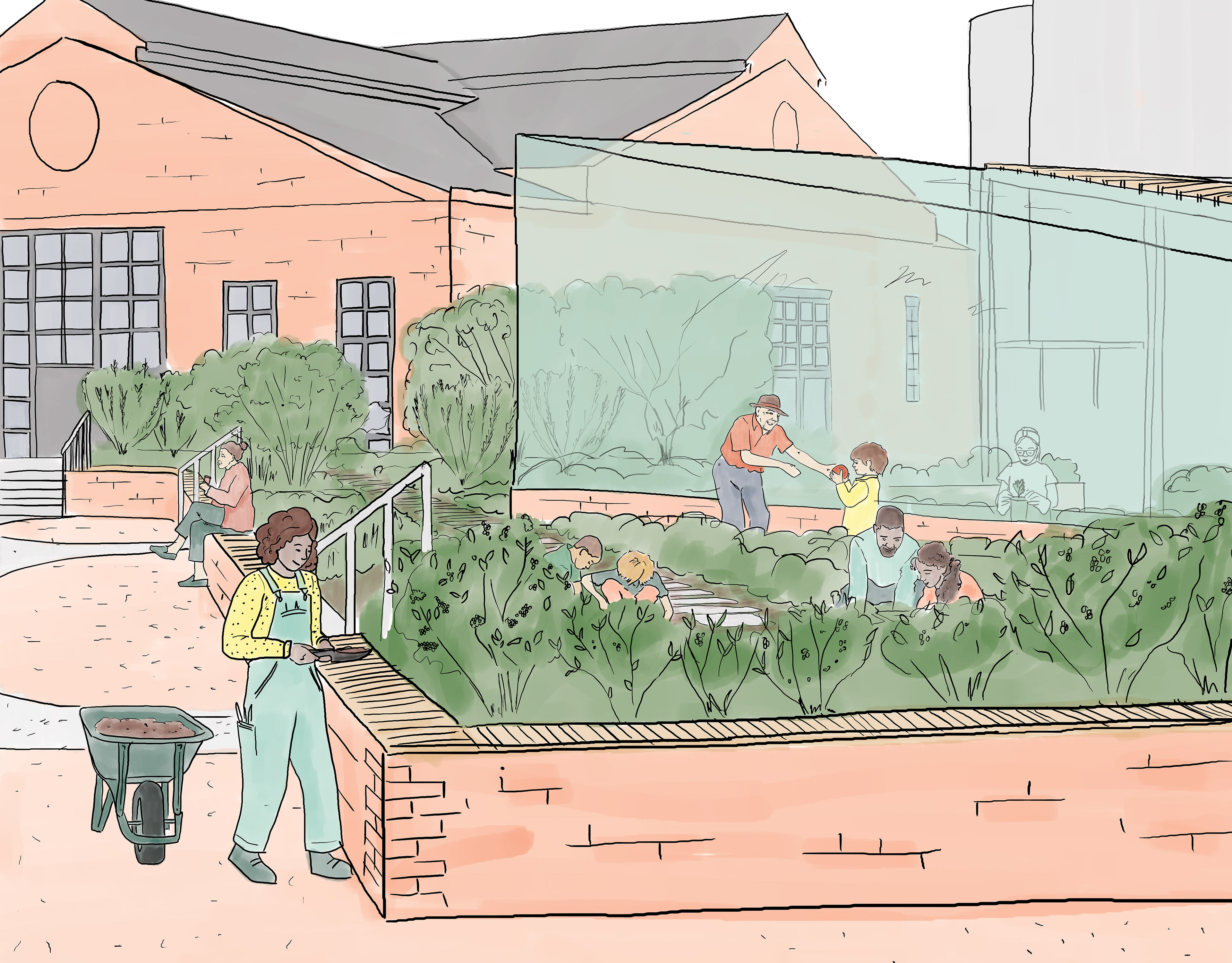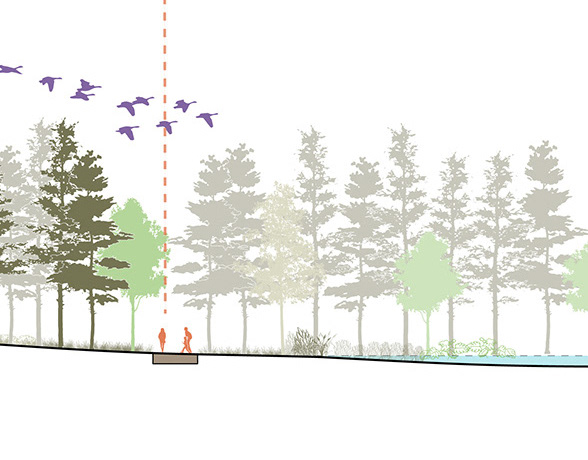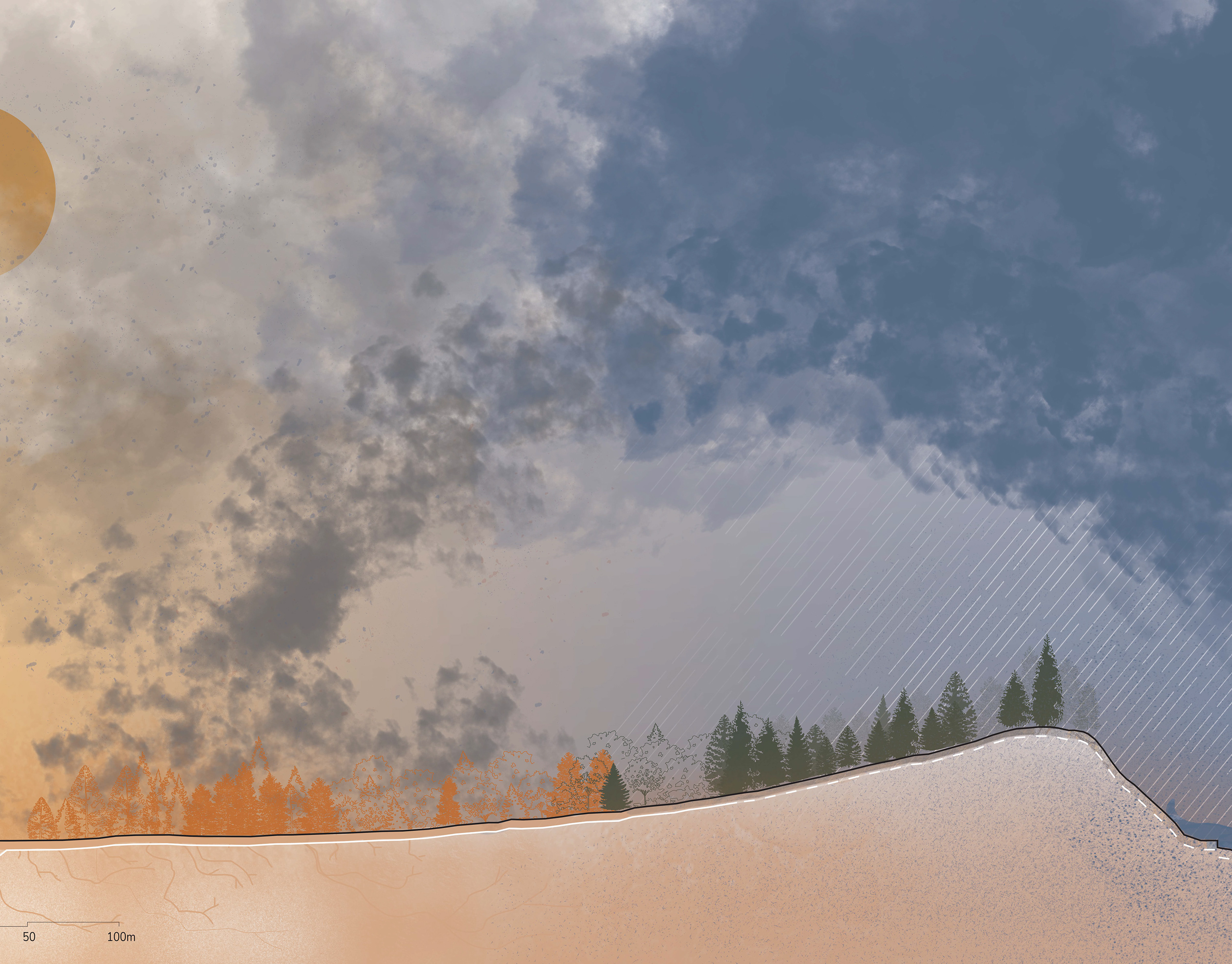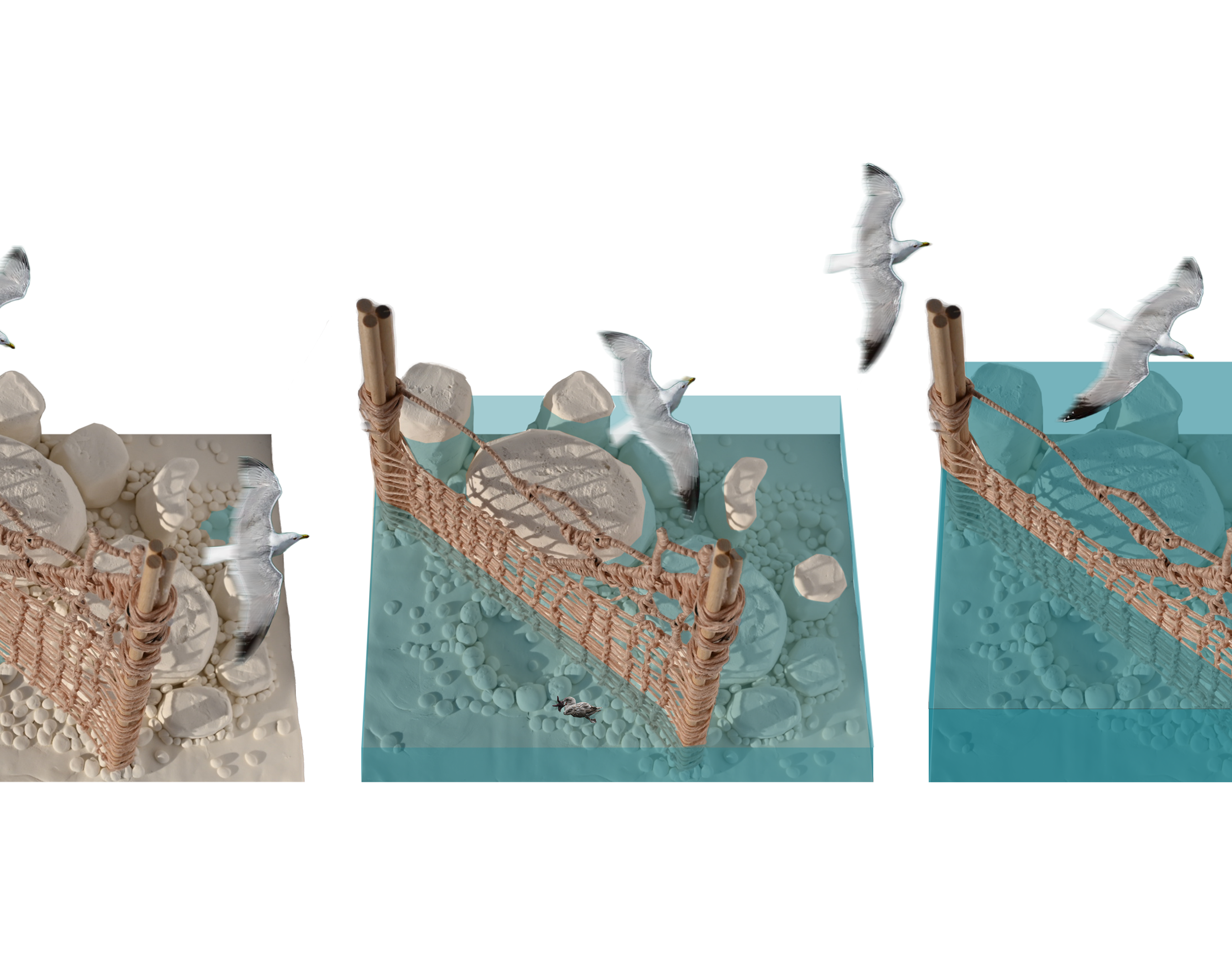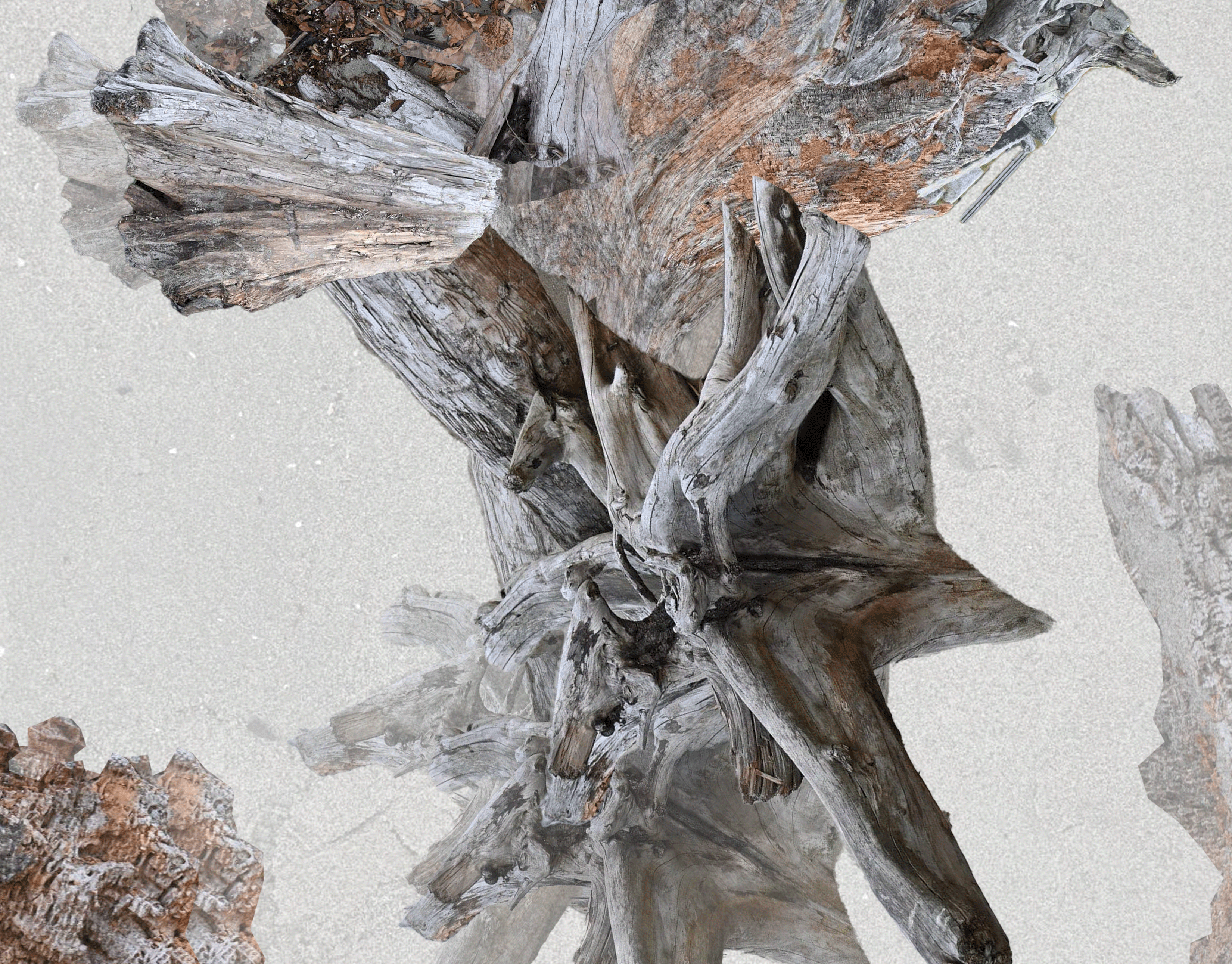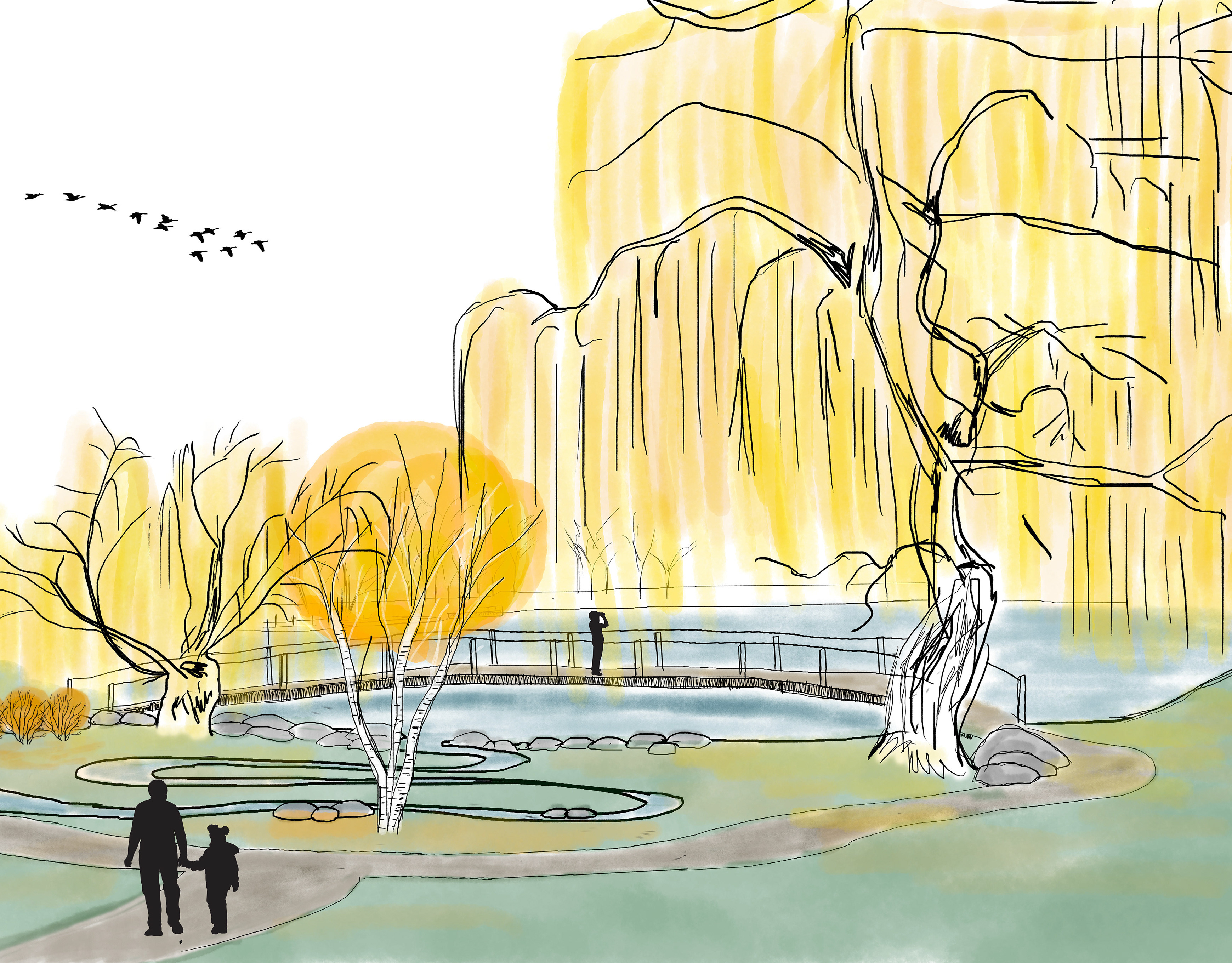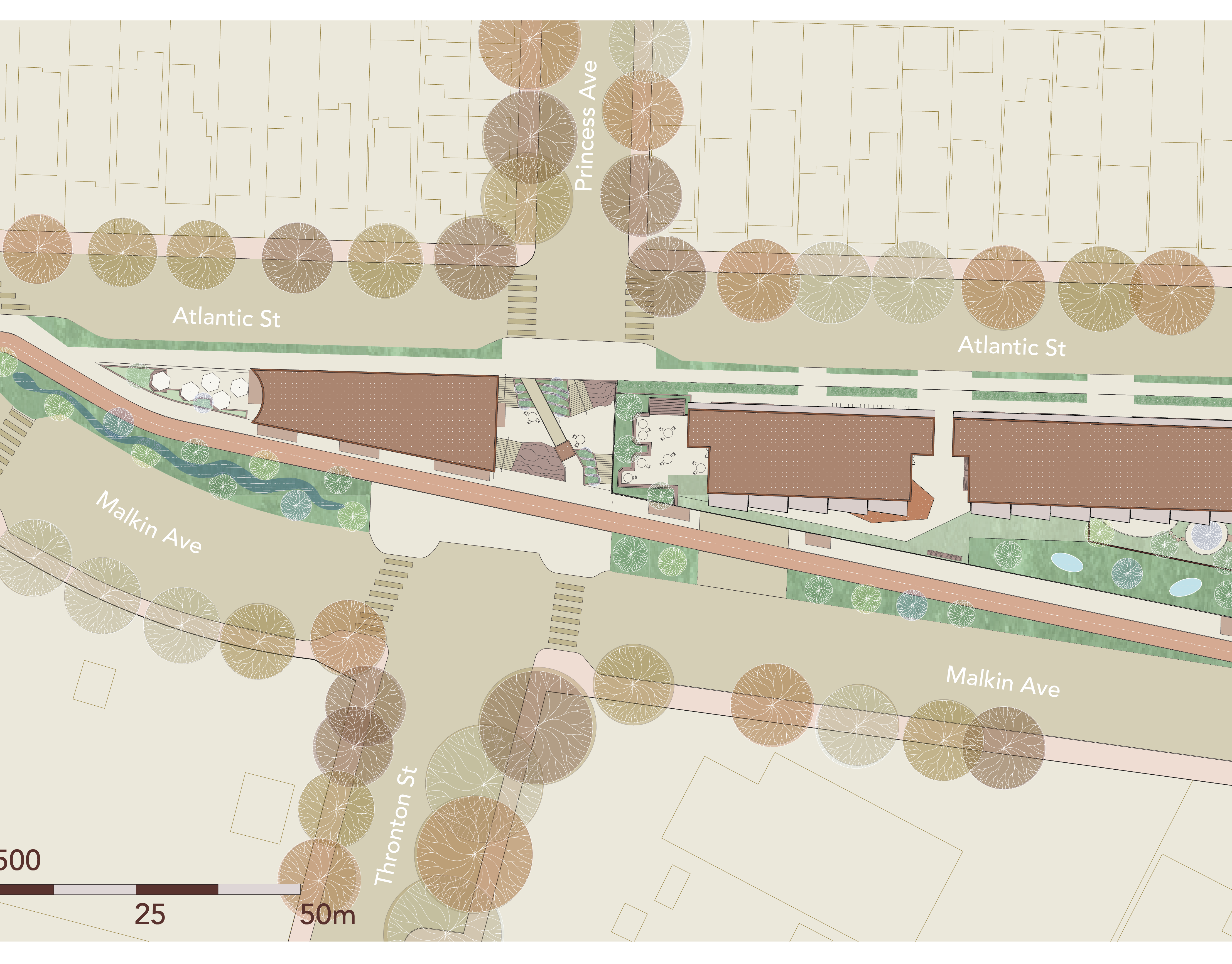Project Description
This project considers how opportunities for citizen science could be designed in urban parks to inform the design and monitoring of bird habitat restoration sites. Landscape architects are well positioned to design interventions for citizen scientists and birders to collect data in more consistent ways by aligning site programming with existing citizen science projects. This project is focused on applications of citizen science at Trout Lake (John Hendry Park) in Vancouver, but lessons learned could be applied more broadly to inform future bird habitat restoration, public education, and landscape monitoring approaches in urban areas.
This project would not have been possible without the mentorship of my supervisor, Duncan Chambers. For a full list of acknowledgements, project context, process work, and planting details, read the full report from the University of British Columbia Library.
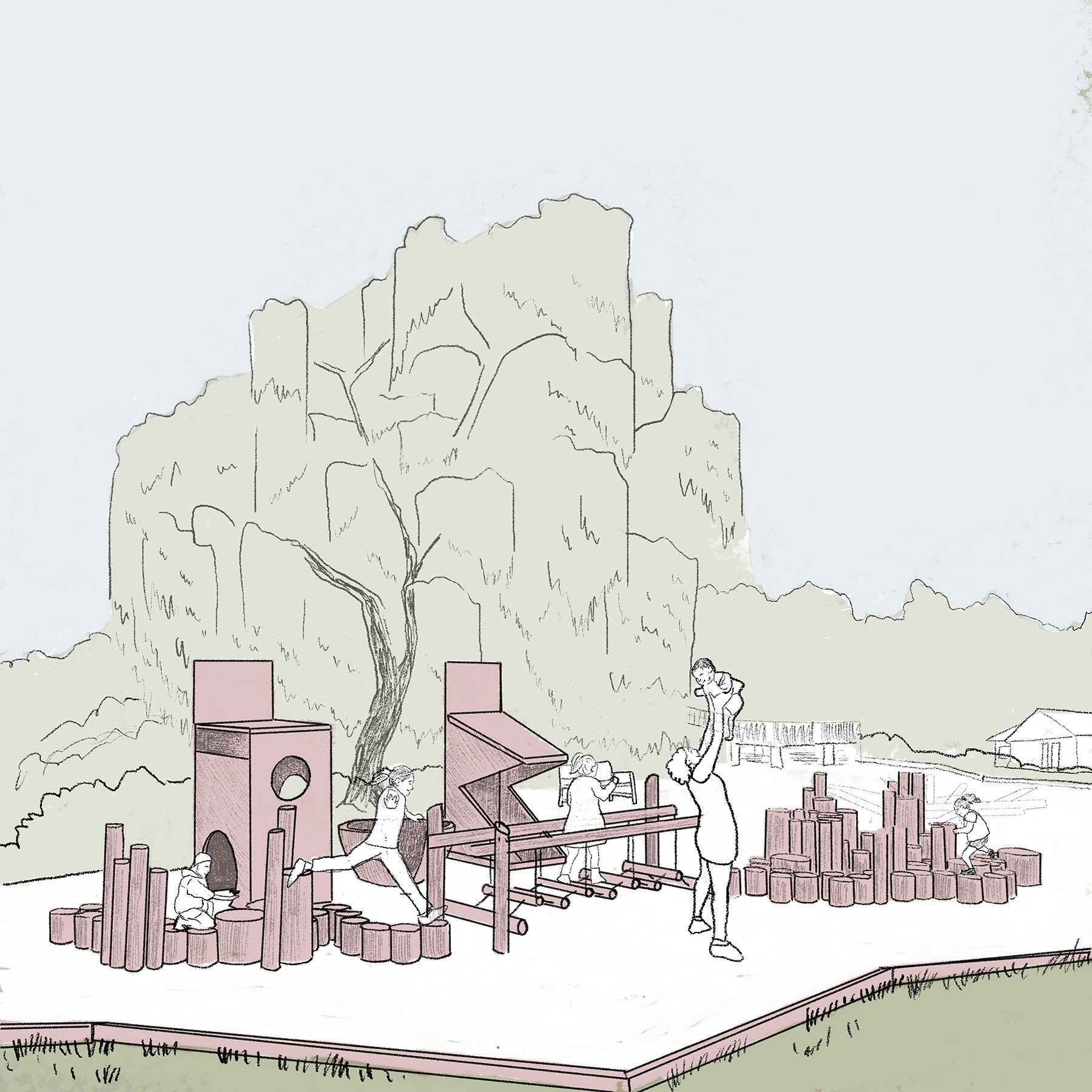
Soar with the songbirds
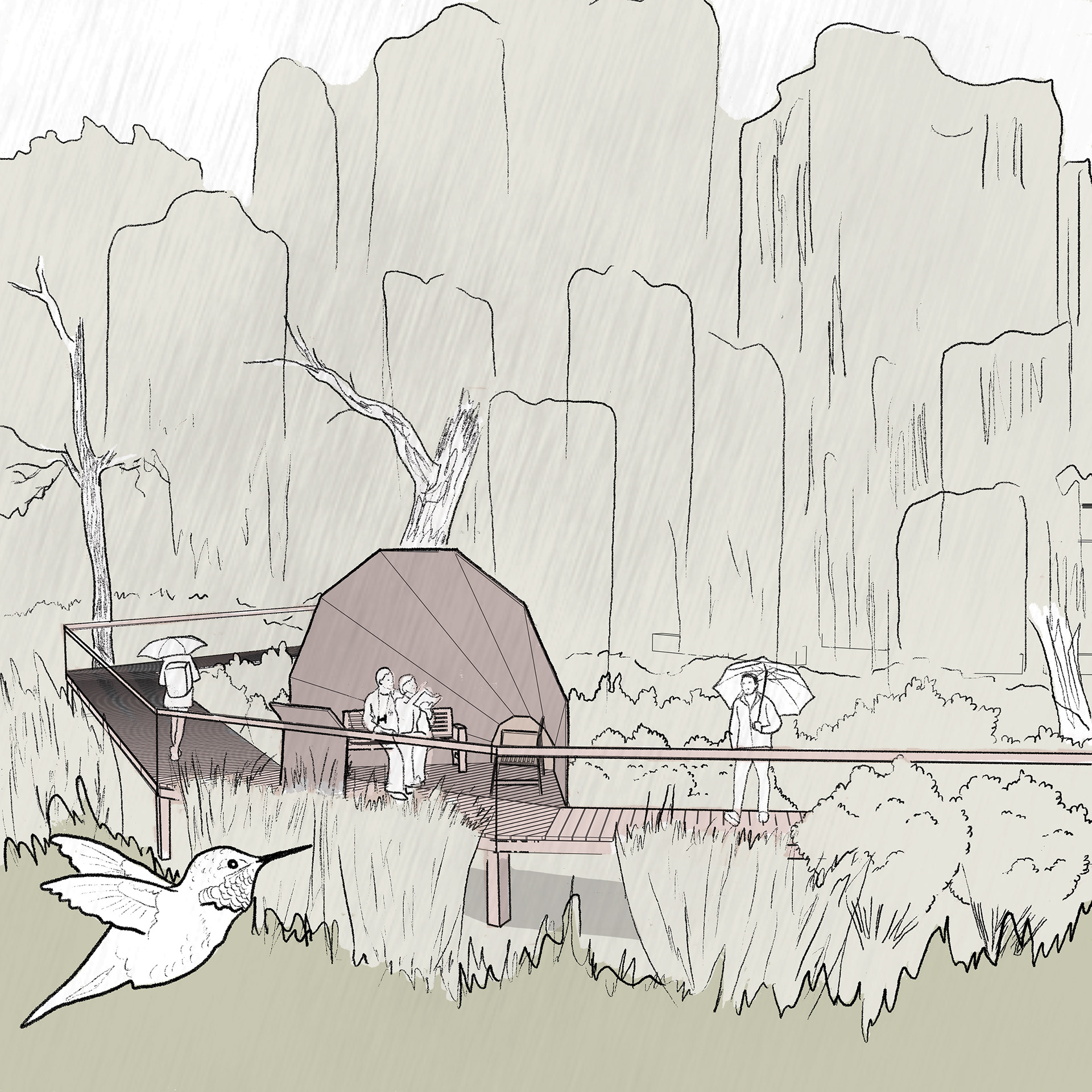
Hear the hummingbirds
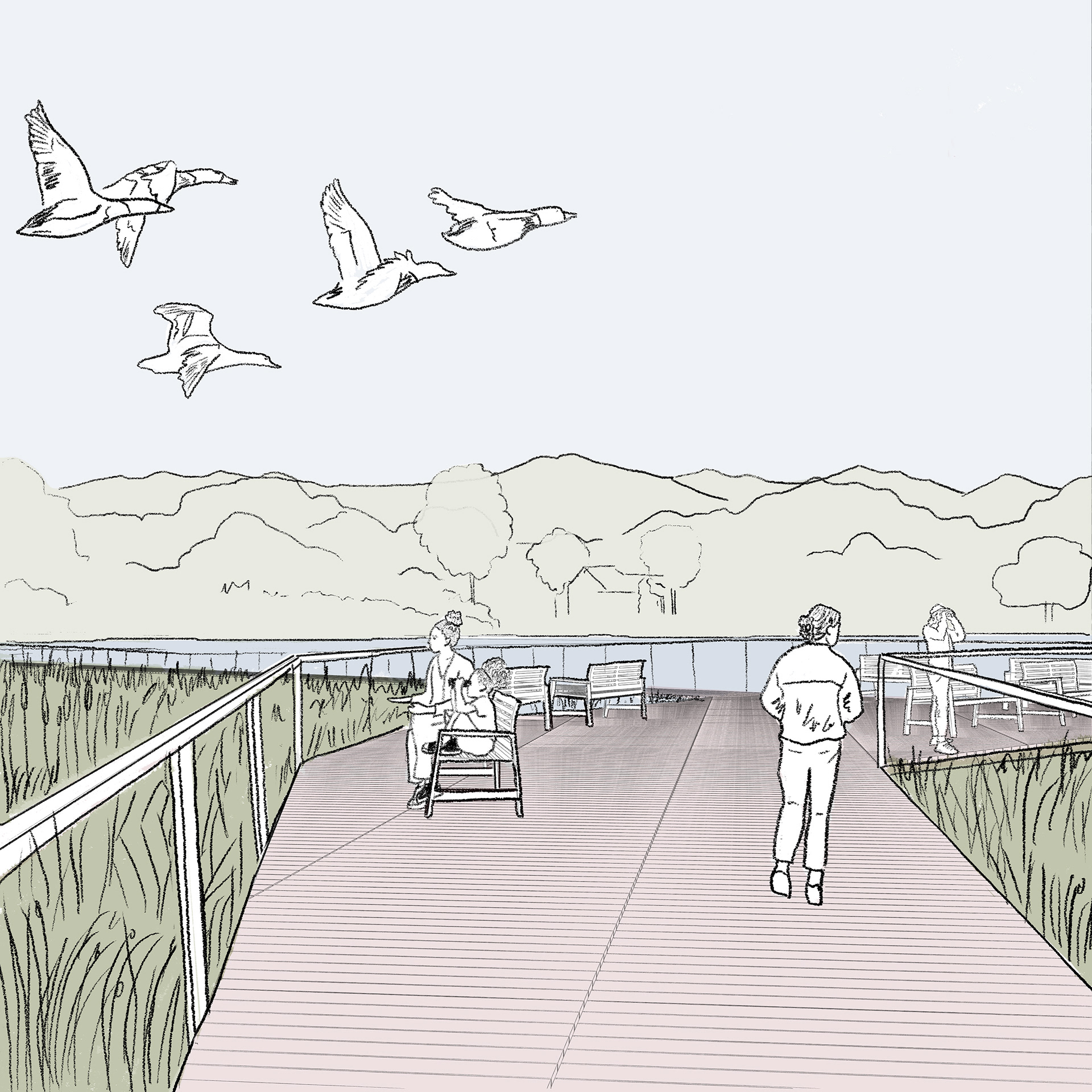
Watch the waterfowl
1 Soar with the songbirds
A lot can be learned through watching bird behaviours. Some birds are more likely to be seen in particular habitats or places in an urban park (such as on a lawn or in a tree), or doing different activities (such as swimming or using a bird feeder). This space is the first stop in the citizen science journey around Trout Lake. Targeted towards families with young children, play experiences such as the cableway and climbing structure mimic flight patterns of songbirds, and the motion of hopping from branch to branch like a chickadee foraging for catkins. Nest themed playhouses encourage children to think about which cavity nesting birds use nest boxes, and which use other nesting types such as cup shaped nests. A child scale observation tower with mounted binoculars overlooks the rain garden and bird feeders as an introduction to observing songbirds. Interpretive signage in this location focuses on introducing the basics of bird ID of families and species likely to use bird feeders at Trout Lake.
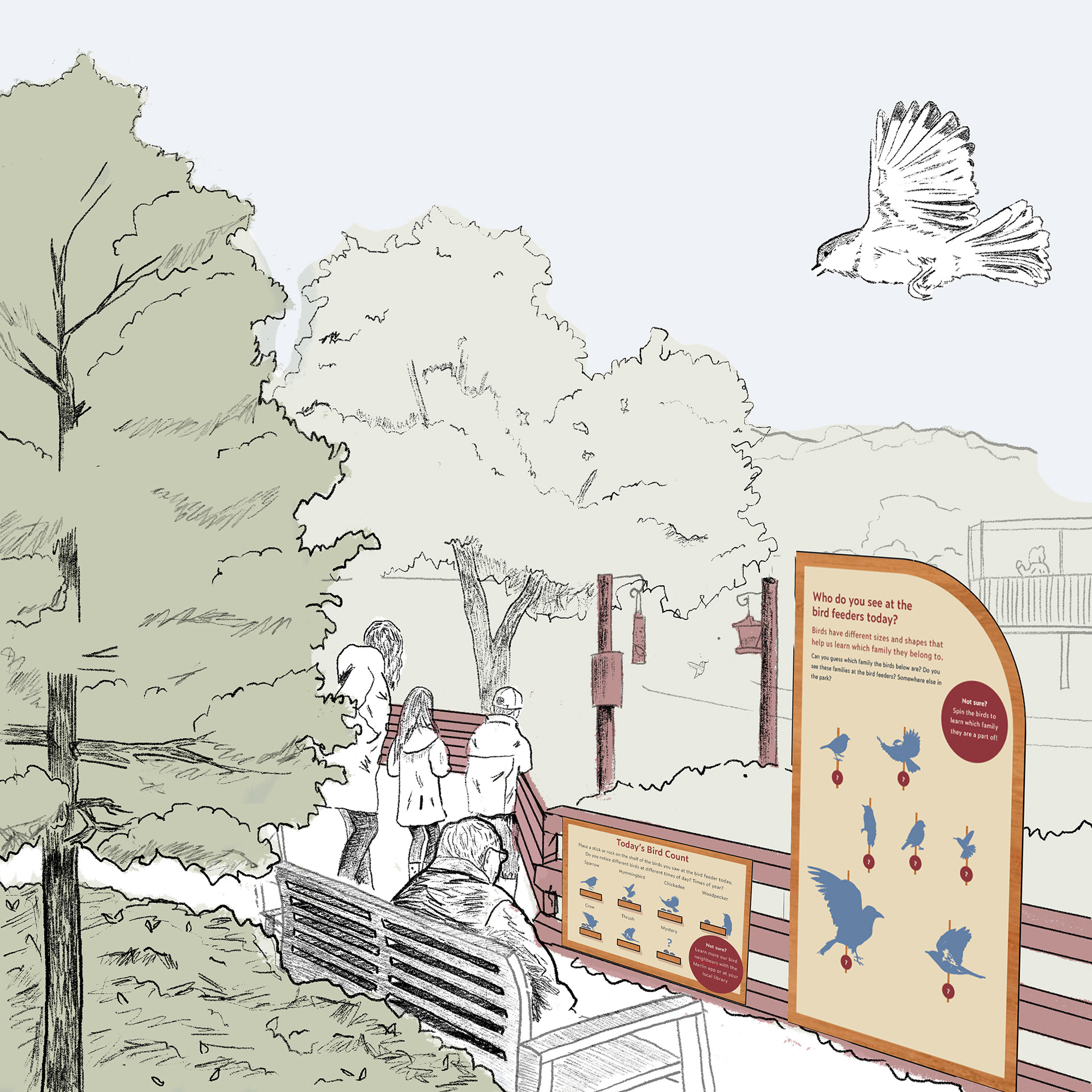
1.1
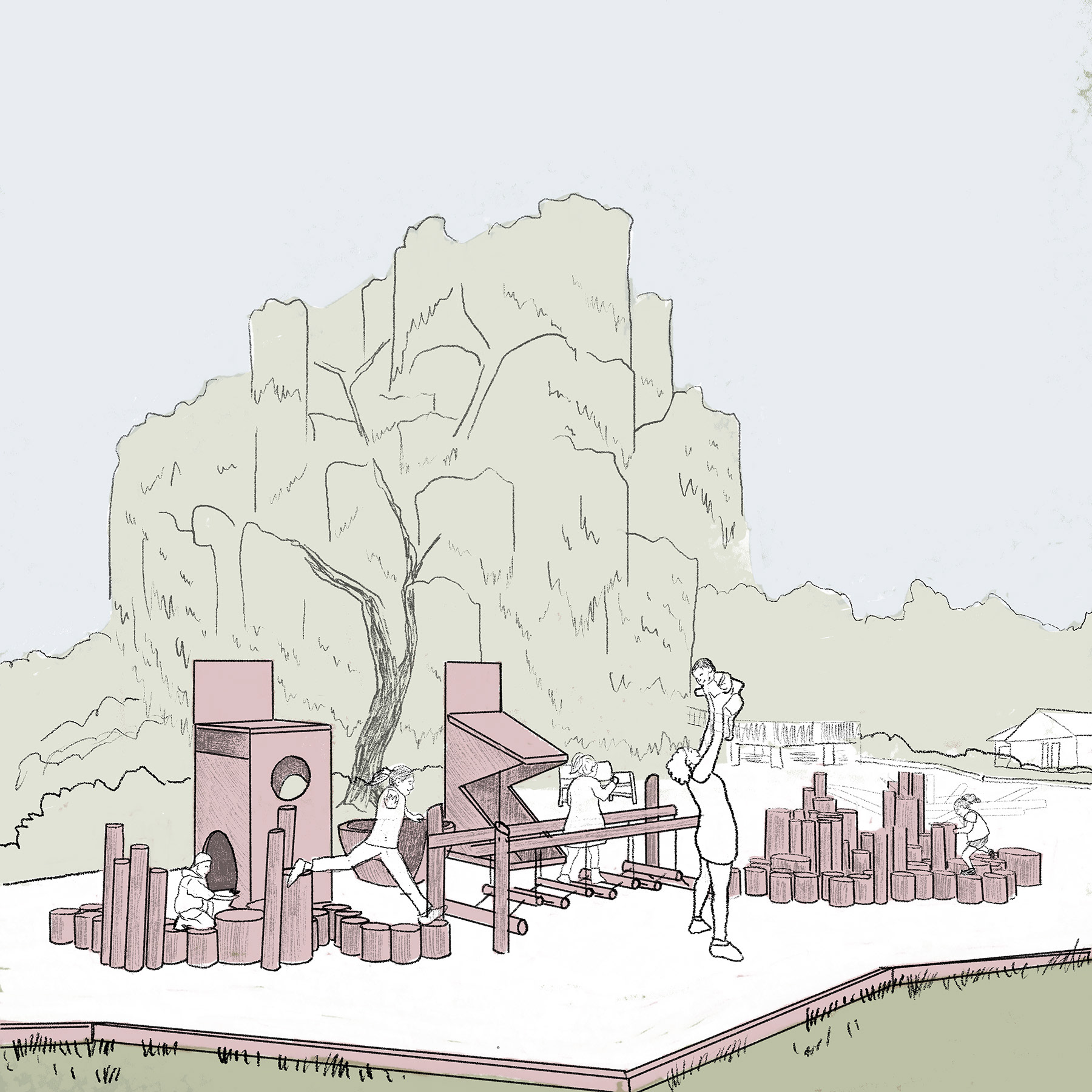
1.2
2 Hear the hummingbirds
Often when I’m birdwatching I hear calls and songs before I see a bird, and sometimes I don’t see them at all. At this particular viewpoint at Trout Lake, I’ve observed an Anna’s Hummingbird at every visit, and I usually hear it’s distinctive “buzzing” song which helps me to see an otherwise hard bird to spot given its speed and small size. This design strives to amplify the sound experiences by increasing the shrub layer between the primary circulation and the viewpoint and adding a covered ‘megaphone’ shaped viewpoint to shift visitors focus towards the lake. The observation point encourages citizen scientists to record the birds they hear using the Merlin app to create a more fulsome library of bird calls at Trout Lake.
3 Watch the waterfowl
Viewpoints overlooking the lake make Trout Lake especially engaging for learning different species of waterfowl. It is a great spot to watch ducks dabbling and diving for aquatic vegetation. Since waterfowl are larger and slower moving than smaller species such as songbirds, they are a great starting point for learning bird ID. The addition of a new boardwalk creates viewpoints both across the water and towards the thickened vegetated buffer along the shore. This creates opportunities to interact with birds in a variety of settings from a safe distance.
